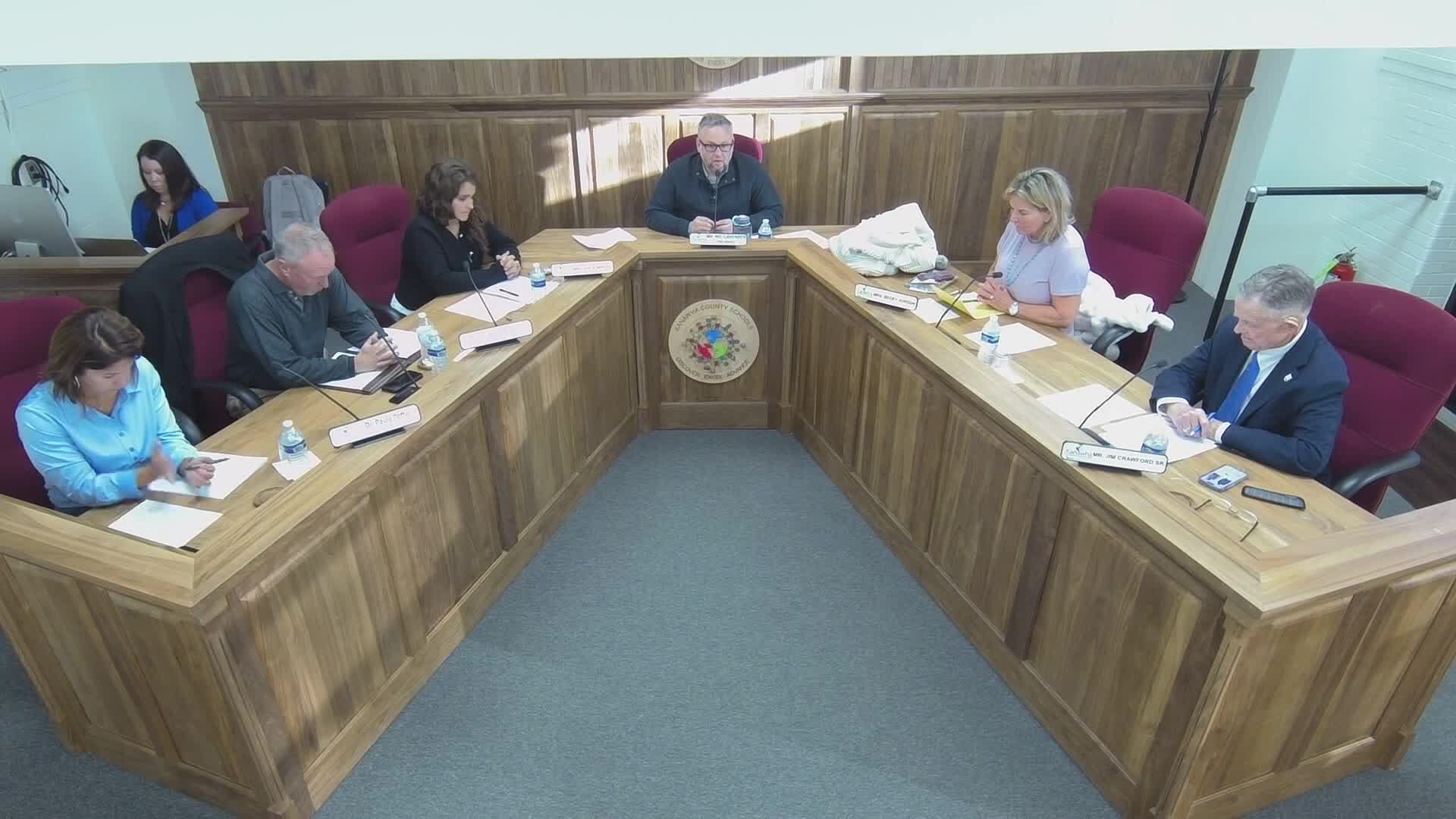Kanawha teachers return from Ron Clark Academy with active-learning practices, ask board for wider rollout
November 03, 2025 | KANAWHA COUNTY SCHOOLS, School Districts, West Virginia
This article was created by AI summarizing key points discussed. AI makes mistakes, so for full details and context, please refer to the video of the full meeting. Please report any errors so we can fix them. Report an error »

The Kanawha County Board of Education on Nov. 3 heard teachers describe how training at the Ron Clark Academy in Atlanta has changed classroom routines and student engagement. Mrs. Bridal, who introduced the presentation, said a combination of business sponsors and scholarships enabled the district to send 96 teachers to the academy in July.
Amy Veil, a math teacher at Dunbar Middle School, said the academy shifted instruction from ‘‘passive learning to active’’ by prioritizing discussion, ‘‘cognitive discourse’’ and student defense of reasoning. ‘‘Students now engage in small group instruction where they participate in cognitive discourse, real conversations about math,” Veil said. ‘‘It is no longer just about being right or wrong. It is also about understanding why.’’
Megan Bryson, a Spanish teacher at Horace Mann Middle School, described classroom techniques the schools are adopting: movement, music at arrival, hand signals for quick responses, ‘‘presentation-style’’ speaking by students, and a house system to build identity and community. ‘‘We are using movement, music, a lot of visuals for our transitions and to also create atmosphere for those kids to be comfortable,’’ Bryson said. She added that teachers are posting Ron Clark’s ‘‘Essential 55’’ rules in classrooms and sharing them in morning announcements.
Presenters and board members discussed which practices are transferable to fully public schools. Mrs. Bridal told the board that some scholarship support and partner funding made the trip possible; presenters acknowledged that Ron Clark Academy operates as a public charter with selective elements and that teachers were asked to adapt ideas rather than copy the model wholesale.
Board members including Mrs. White urged the administration to continue funding opportunities to send more teachers and administrators to the academy, saying broader staff exposure would help scale practices across schools. Several teachers said they had already begun implementing changes—tutoring, incentive systems, and house-based student structures—and planned requests for modest funding (books, lanyards, shirts and classroom materials) to support rollout.
Teachers and presenters emphasized the training’s focus on environment, expectations and student accountability rather than specific capital investments. The board did not take formal action on funding during the meeting; teachers said grant or local teacher-funding requests would follow through normal channels.
Amy Veil, a math teacher at Dunbar Middle School, said the academy shifted instruction from ‘‘passive learning to active’’ by prioritizing discussion, ‘‘cognitive discourse’’ and student defense of reasoning. ‘‘Students now engage in small group instruction where they participate in cognitive discourse, real conversations about math,” Veil said. ‘‘It is no longer just about being right or wrong. It is also about understanding why.’’
Megan Bryson, a Spanish teacher at Horace Mann Middle School, described classroom techniques the schools are adopting: movement, music at arrival, hand signals for quick responses, ‘‘presentation-style’’ speaking by students, and a house system to build identity and community. ‘‘We are using movement, music, a lot of visuals for our transitions and to also create atmosphere for those kids to be comfortable,’’ Bryson said. She added that teachers are posting Ron Clark’s ‘‘Essential 55’’ rules in classrooms and sharing them in morning announcements.
Presenters and board members discussed which practices are transferable to fully public schools. Mrs. Bridal told the board that some scholarship support and partner funding made the trip possible; presenters acknowledged that Ron Clark Academy operates as a public charter with selective elements and that teachers were asked to adapt ideas rather than copy the model wholesale.
Board members including Mrs. White urged the administration to continue funding opportunities to send more teachers and administrators to the academy, saying broader staff exposure would help scale practices across schools. Several teachers said they had already begun implementing changes—tutoring, incentive systems, and house-based student structures—and planned requests for modest funding (books, lanyards, shirts and classroom materials) to support rollout.
Teachers and presenters emphasized the training’s focus on environment, expectations and student accountability rather than specific capital investments. The board did not take formal action on funding during the meeting; teachers said grant or local teacher-funding requests would follow through normal channels.
Don't Miss a Word: See the Full Meeting!
Go beyond summaries. Unlock every video, transcript, and key insight with a Founder Membership.
✓
Get instant access to full meeting videos
✓
Search and clip any phrase from complete transcripts
✓
Receive AI-powered summaries & custom alerts
✓
Enjoy lifetime, unrestricted access to government data
30-day money-back guarantee
